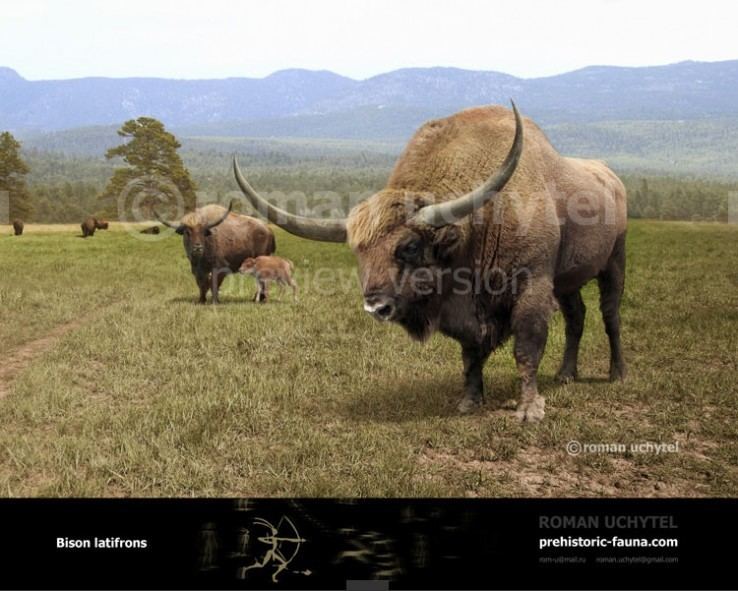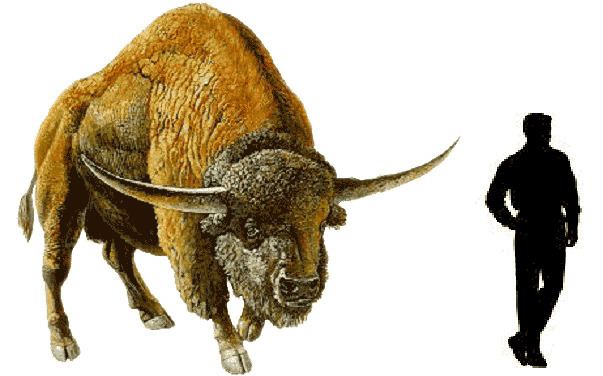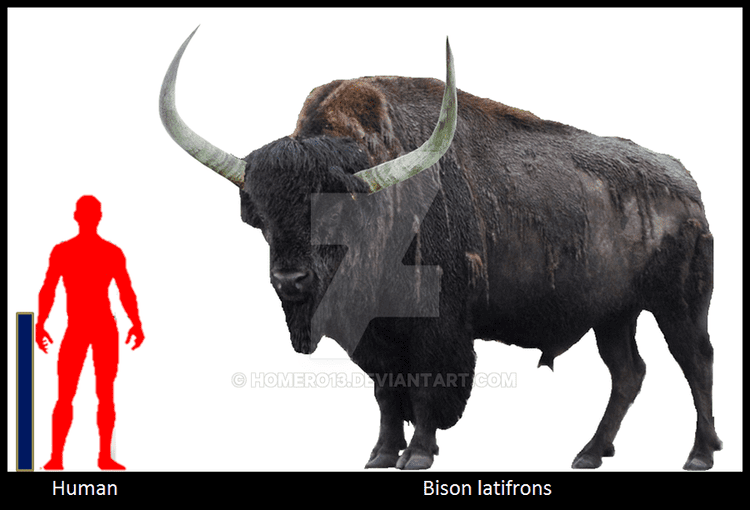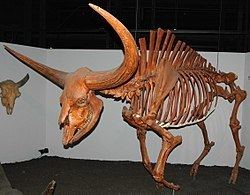Rank Species | Genus Bison Higher classification Bison | |
 | ||
Height 2.5 m (Adult, At Shoulder) Similar | ||
Bison latifrons (also known as the giant Ice Age bison or long-horned bison) is an extinct species of bison that lived in North America during the Pleistocene epoch. B. latifrons thrived in North America for approximately 200,000 years, but became extinct some 20,000–30,000 years ago, at the beginning of the Last Glacial Maximum.
Contents

Description

B. latifrons reached a shoulder height of 2.5 meters (8.2 ft) and may have weighed over 2,000 kilograms (4,400 lb). It competes with the "giant Africa buffalo" Pelorovis for the title of largest bovid, and even largest ruminant ever to live, possibly outweighing the extant African giraffe (Giraffa camelopardis). The horns of B. latifrons measured as great as 213 centimeters (84 in) from tip to tip, compared with only 66 centimeters (26 in) in modern Bison bison. The known dimensions of the species are much larger than any extant bovid, including both extant species of bison — the American bison and the European bison. Based on a comparison of limb bones between B. latifrons and B. bison, the mass of the former is estimated to have been 25%–50% greater than that of the latter. In fact, B. latifrons is possibly the largest bovid in the fossil record.
Evolution

B. latifrons is thought to have evolved in midcontinent North America from Bison priscus, another prehistoric species of bison which migrated across the Bering land bridge between 240,000–220,000 years ago. B. latifrons was one of many species of North American megafauna which became extinct during the transition from the Pleistocene to the Holocene epoch (an event referred to as the Quaternary extinction event). It is thought to have disappeared some 21,000–30,000 years ago, during the late Wisconsin glaciation. The species was replaced by the smaller Bison antiquus, which in turn evolved into the yet smaller Bison — the modern American bison — some 10,000 years ago.
Habitat and behavior

An herbivore, B. latifrons is believed to have lived in small family groups, grazing in the Great Plains and browsing in the woodlands of North America. Paleontologists believe it preferred the warmer climes of what's now the United States, and fossils of the species have been found as far south and west as modern-day San Diego, California. The large, thick horns of the males are believed to have been employed as a visual deterrent to large carnivorous megafauna such as the saber-toothed cat and short-faced bear, and also to establish dominance in battle with other males for the right to mate.

